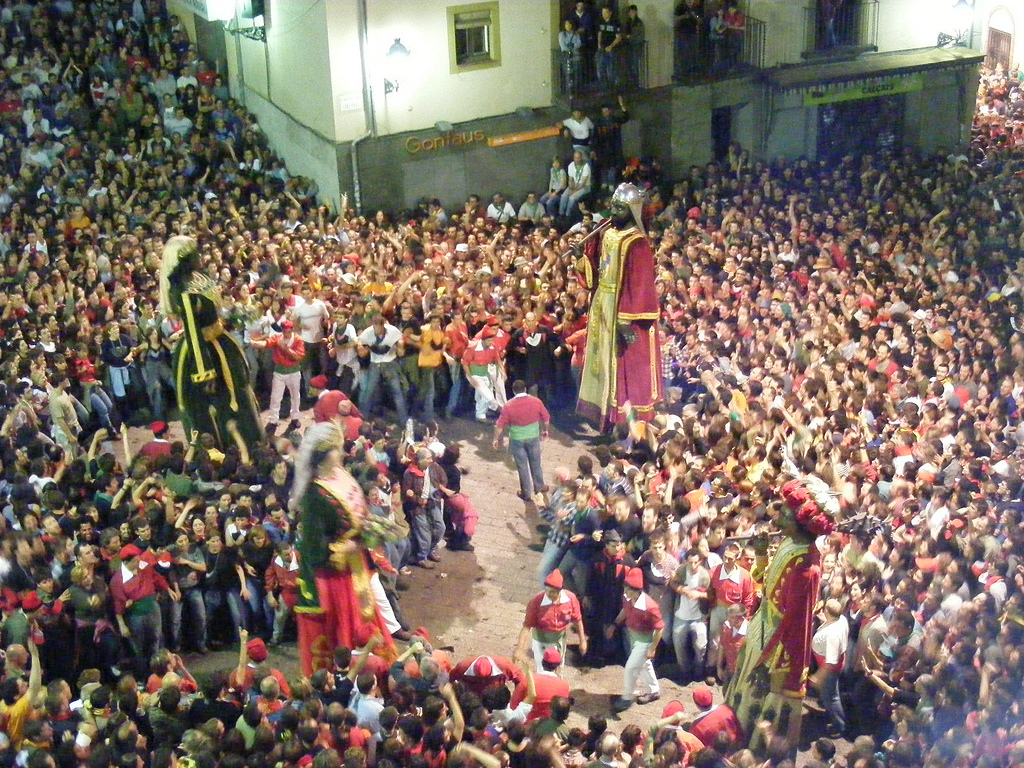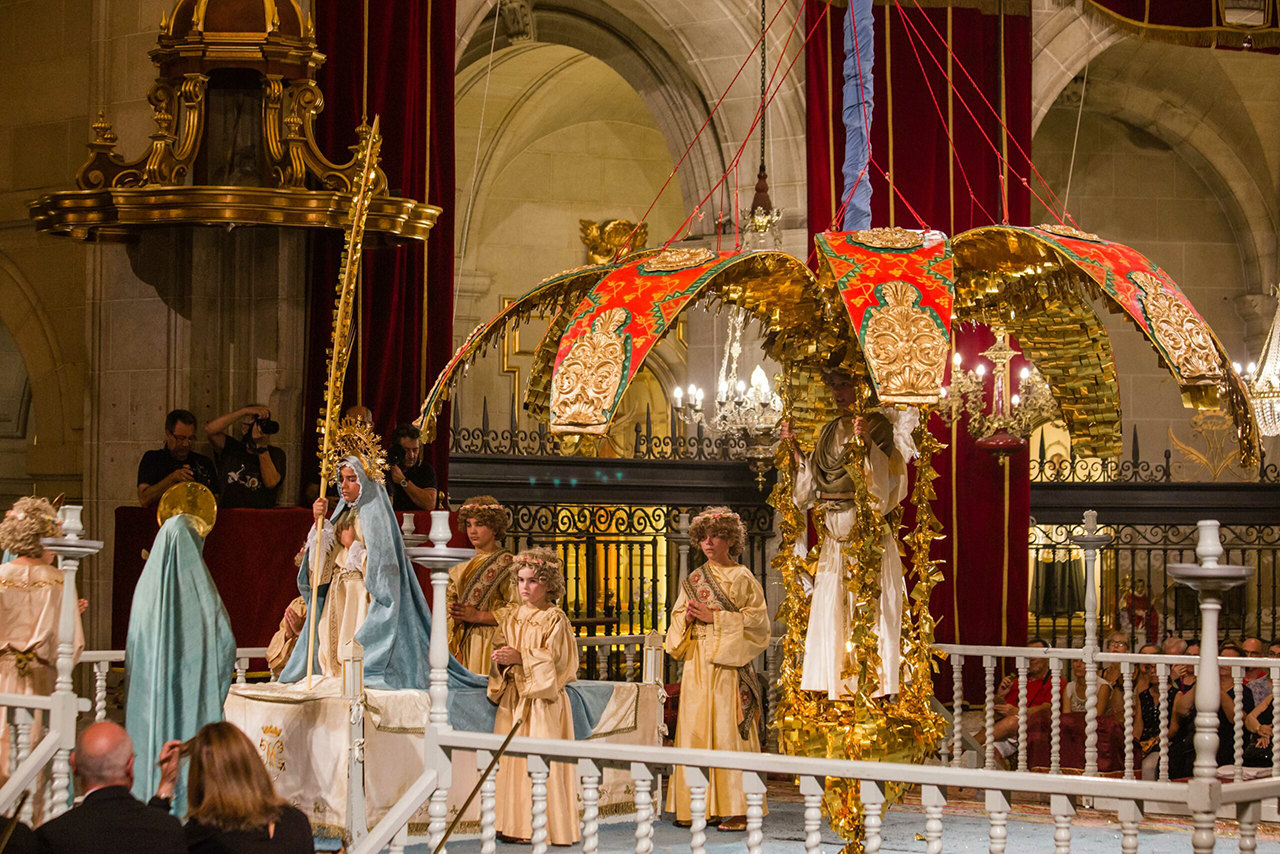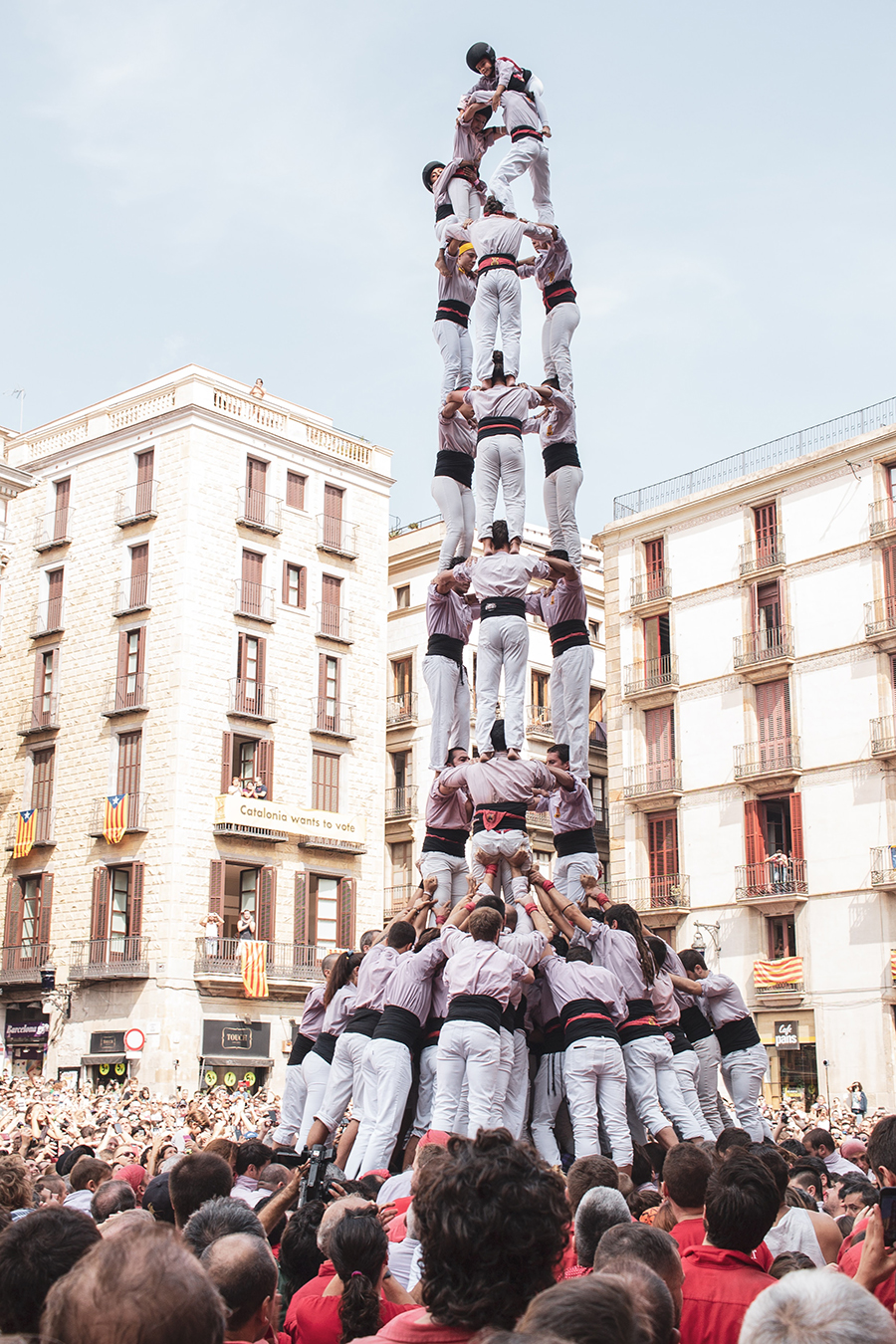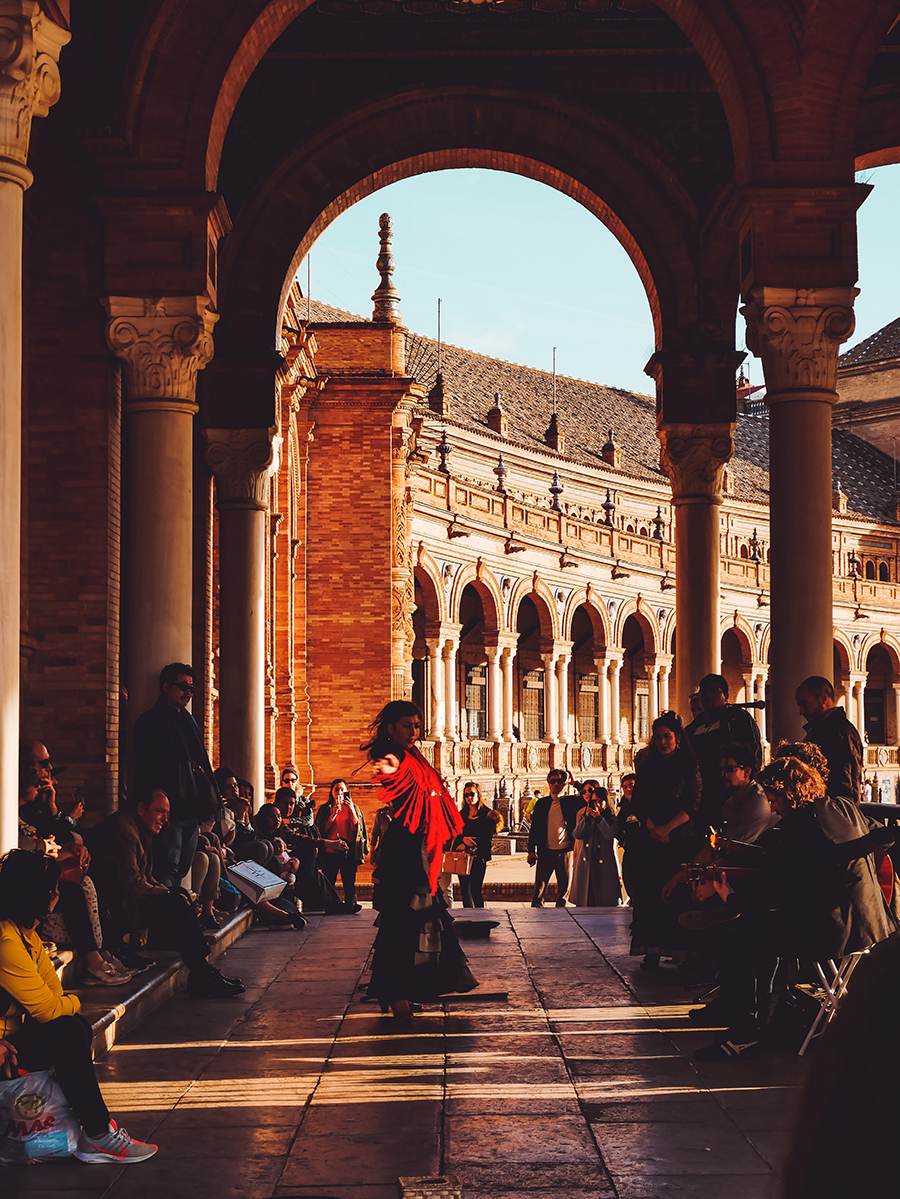Introduction
Spain, with its millennia-old history, has always been a melting pot of cultures, traditions, and festivities. From the rhythmic beats of Flamenco to the towering human castles in Catalonia, the nation’s cultural richness is unparalleled. But what truly sets some of these traditions apart is the esteemed recognition they’ve received on a global platform.
UNESCO’s recognition is not just an honor; it’s a testament to the timeless nature and universal appeal of these traditions. The United Nations Educational, Scientific and Cultural Organization (UNESCO) aims to identify, protect, and preserve cultural and natural heritage around the world, deemed to be of outstanding value to humanity. When a tradition from Spain makes it to this list, it’s not just a win for the country, but a nod to the universal human experience that such a tradition represents.
Diving into Spain’s rich tapestry of traditions, one can’t help but be overwhelmed by its diversity. Every region, every city, and every village has its unique way of celebrating life. Some of these celebrations have roots that trace back centuries, while others are more recent but equally significant. They are a reflection of Spain’s history, its victories, its struggles, and its indomitable spirit.
For a traveler, these festivities offer a unique window into the soul of Spain. They are not just events; they are experiences, waiting to be lived, felt, and cherished. And with UNESCO’s stamp of approval, they come with an added layer of significance, beckoning travelers from around the world to partake in a slice of Spain’s cultural legacy.
For more information on UNESCO’s mission and its recognized sites and traditions, visit the official UNESCO website here.
Criteria for UNESCO’s Intangible Cultural Heritage
The UNESCO’s Intangible Cultural Heritage list is not just a compilation of world traditions; it’s a carefully curated record that recognizes practices and expressions that testify to the diversity of humanity. But how does a tradition make it to this esteemed list? Let’s delve into the intricate selection process and the emphasis on preservation.
Understanding the selection process
For a tradition or festivity to be considered for the Intangible Cultural Heritage list, it must meet specific criteria set by UNESCO:
- Representativeness: The tradition should be a testimony to cultural diversity and human creativity.
- Community involvement: It should be recognized by the community, group, or individuals that create, maintain, and transmit it as their intangible cultural heritage.
- Transmissibility: The tradition should be passed down through generations, ensuring its continued relevance.
- Consistency with UNESCO’s principles: The practice should promote respect for cultural diversity and human creativity, devoid of any discriminatory aspects or practices.
- Risk factors: Traditions that are at risk due to globalization or lack of resources often receive priority, as the list aims to raise awareness and mobilize resources for their protection.
The Importance of preservation and promotion
Once a tradition is recognized by UNESCO, it doesn’t just earn a title; it gains a commitment. The inclusion in the list is a pledge by the international community and the country of origin to safeguard and promote the tradition. This recognition often leads to:
- Increased awareness: Both at a local and global level, ensuring that more people respect and understand the significance of the tradition.
- Financial and technical support: To ensure the tradition’s continuity, especially if it’s at risk.
- Community pride and engagement: Elevating the community’s pride in their heritage and encouraging active participation in its preservation.
The ultimate goal is not just to recognize but to ensure that these traditions, which form the very fabric of our shared human experience, continue to thrive and inspire future generations.
La Patum de Berga
Nestled in the heart of Catalonia, the town of Berga becomes a vibrant epicenter of tradition and festivity during the celebration of La Patum. This event, with its deep roots and mesmerizing displays, has rightfully earned its place on UNESCO’s Intangible Cultural Heritage list.

Origins and historical background
The origins of La Patum can be traced back to the end of the 14th century, evolving from the theatrical representations of biblical passages that were common during the Corpus Christi feast. Over time, these representations transformed, incorporating elements of local folklore, pagan rituals, and historical events. The name “Patum” is believed to derive from the onomatopoeic sound of the drums that play a vital role in the festivity.
The festival is a blend of various acts that symbolize the fight between good and evil. With its dragons, giants, and mystical creatures, La Patum is a vivid representation of Berga’s historical, religious, and cultural evolution.
Main events and significance
- Els Plens: This act is the heart of La Patum, where groups of people jump rhythmically to the sound of a single drum, creating a unified and hypnotic dance. The participants, dressed in white with red belts and hats, represent the purity and unity of the community.
- Els Turcs i Cavallets: Symbolizing the fight between Moors and Christians, this act is a dance-battle that recalls Spain’s rich history of coexistence and conflict between these two cultures.
- Els Maces: Giant sticks carried by participants, representing the ancient guilds of Berga, dance to the rhythm of the music, showcasing the town’s medieval past.
- Els Guites: Mythical creatures that dance and chase the attendees, adding a touch of mischief and fun to the celebration.
- L’Àliga: The eagle, representing the town of Berga, dances majestically, embodying the pride and spirit of the community.
The significance of La Patum goes beyond mere entertainment. It’s a unifying event, bringing together people from all walks of life to celebrate their shared history, beliefs, and cultural identity. The festival is not just a display of dances and costumes; it’s a living testament to Berga’s resilience, creativity, and communal spirit.
For more details and to plan a visit during the festivities, check out Berga’s official tourism website here.
Mystery Play of Elche (Misteri d’Elx)
In the heart of the Valencian Community, the city of Elche (or Elx in Valencian) holds a treasure that transcends time: the Mystery Play of Elche, or Misteri d’Elx. This sacred musical drama, performed annually in the Basilica of Santa María, is not just a play but a profound spiritual experience that has been preserved for over five centuries.
The story behind the Play
The Misteri d’Elx is believed to have originated in the mid-13th century, making it the oldest liturgical drama of its kind in Europe. The play depicts the final days of the Virgin Mary, her Assumption into heaven, and her Coronation as the Queen of Heaven. It’s divided into two acts: “La Vespra” (The Eve), which is performed on the 14th of August, and “La Festa” (The Feast), performed on the 15th.
The origins of the play are shrouded in legend. One popular tale suggests that a mysterious chest washed ashore on the local beach, containing the play’s script and musical scores. Regardless of its origins, the play’s significance in the community’s religious and cultural life is undeniable.

How it’s celebrated today
The Misteri d’Elx is performed inside the Basilica of Santa María, with the church’s central nave serving as the stage. The play is unique in its use of space: heaven is represented by the upper part of the nave, while the earth is the main floor. A large wooden device, “la Mangrana,” symbolizing heaven, descends to collect the Virgin Mary, creating a visually stunning moment.
The roles are played by local male actors, including the role of the Virgin, as per tradition. The entire city participates, either as performers, musicians, or as the audience, making it a deeply communal event.
In 2001, UNESCO recognized the Mystery Play of Elche as a Masterpiece of the Oral and Intangible Heritage of Humanity, emphasizing its importance as a living tradition that connects the community to its medieval past.
For those wishing to experience this timeless tradition, it’s recommended to book in advance due to the high demand. More information, schedules, and ticketing can be found on the official website of the Misteri d’Elx here.
Human Towers (Castells)
In the vibrant region of Catalonia, a unique and awe-inspiring tradition stands tall, both literally and figuratively: the Human Towers, or Castells. These towering human structures, built with precision, strength, and unity, are not just a display of physical prowess but a profound symbol of communal solidarity and Catalonian identity.

The catalonian tradition of building human towers
The tradition of Castells dates back to the 18th century in the city of Valls, near Tarragona. Over the years, it has spread throughout Catalonia and even to other regions of Spain. A typical Castell is built in two phases: the “pinya” (base) which provides support, followed by the creation of the tower itself, which can reach up to ten levels high. The tower is considered complete when a child, known as the “enxaneta,” climbs to the very top and raises one hand with four fingers extended, symbolizing the four stripes of the Catalonian flag.
Each Castell is a marvel of human coordination, strength, and balance. Teams, or “colles,” train rigorously and compete in local festivals, aiming to build the highest and most complex towers.
Symbolism and cultural importance
The Castells are more than just human pyramids; they are a manifestation of the Catalonian spirit. The act of building a tower symbolizes the unity, cooperation, and strength of the community. Each individual, regardless of their position in the tower, plays a crucial role, embodying the idea that success is achieved through collective effort.
In 2010, UNESCO recognized the Castells as Intangible Cultural Heritage of Humanity, highlighting their cultural and social significance. The recognition was not just for the physical act of tower-building but for the values, skills, and communal solidarity it represents.
For tourists wishing to witness this breathtaking tradition, the best time is during the annual Castells competitions and festivals, especially the Concurs de Castells in Tarragona. More information about the events and the tradition can be found on the official website of the Coordinadora de Colles Castelleres de Catalunya here.
Flamenco: The soulful dance of Andalusia
Few art forms capture the essence of Spain’s passionate soul as vividly as Flamenco. Originating from the sun-drenched region of Andalusia, this captivating dance, combined with its profound music and singing, is not just a performance but an outpouring of raw emotion and cultural pride.
Tracing the roots of flamenco
The origins of Flamenco are as diverse as the rhythms and styles it encompasses. It’s believed to have evolved from a melting pot of cultures, including Gypsy, Moorish, Jewish, and indigenous Andalusian influences, during the 8th to the 15th centuries. The word ‘Flamenco’ itself, though its exact origins are debated, is thought to have been derived from the Spanish word ‘flama’, meaning ‘fire’ or ‘flame’, capturing the art’s fiery spirit.
Historically, Flamenco was a folk art, passed down through generations, practiced in homes and local venues. It was in the 19th century, with the emergence of ‘Café Cantantes’ (singing cafes), that Flamenco began its journey from intimate gatherings to larger public performances.

Its global influence and significance
Over the years, Flamenco has transcended its regional boundaries, captivating audiences worldwide. The intricate footwork, profound guitar melodies, and soul-stirring vocals have inspired countless artists, from filmmakers to musicians outside of Spain. Films like “Carmen” and “Flamenco, Flamenco” by Spanish director Carlos Saura have showcased the art form to international audiences.
In 2010, UNESCO declared Flamenco as one of the Masterpieces of the Oral and Intangible Heritage of Humanity. This recognition wasn’t just for the dance but for the cultural significance it holds, representing freedom, passion, and the spirit of resistance.
For those keen on immersing themselves in the world of Flamenco, the Andalusian Flamenco Centre in Jerez (website) offers a deep dive into its history, styles, and significance.
The Tribunal of the Waters of Valencia
In the heart of Valencia, every Thursday at noon, a tradition unfolds that has been practiced for over a thousand years. The Tribunal of the Waters of Valencia isn’t a festival with music or dancing, but it’s a living testament to Spain’s deep-rooted respect for community, tradition, and sustainable resource management.
A unique tradition of water management
The Tribunal of the Waters is the oldest existing legal institution in Europe, and its primary function is to arbitrate water disputes related to the use of irrigation in the fertile plains of Valencia. Held outside the Cathedral of Valencia, eight elected farmers, representing different water channels of the region, convene to resolve these disputes.
The beauty of this tribunal lies in its simplicity. Cases are presented orally, without the need for written documentation, and decisions are made swiftly, often within minutes. The verdicts, based on centuries-old customs and traditions, are final and cannot be appealed. This efficient system ensures that water, a precious resource, is distributed fairly among the farming community.
Historical importance and modern-day relevance
The origins of the Tribunal of the Waters can be traced back to the Roman and then the Islamic periods, adapting over time but always maintaining its core principles. Its endurance is a testament to its effectiveness and the deep respect it commands among the Valencian community.
In an age where water disputes can lead to prolonged legal battles, the Tribunal stands as a beacon of sustainable and community-driven resource management. Recognizing its significance, UNESCO declared it an Intangible Cultural Heritage of Humanity in 2009.
For those interested in witnessing this age-old tradition, the Valencia Tourism Board (website) provides information on the Tribunal’s sessions and other related cultural events.
Silbo Gomero: the whistling language of La Gomera
High atop the rugged terrains and deep ravines of La Gomera, one of Spain’s Canary Islands, echoes a language that’s as ancient as it is unique. Silbo Gomero isn’t spoken with words, but with whistles. This extraordinary method of communication, tailored to the island’s challenging topography, has been passed down through generations and stands as a testament to human adaptability and cultural preservation.
Origins and evolution of this unique communication method
The origins of Silbo Gomero are shrouded in mystery. Some theories suggest it was brought to the island by ancient African settlers, while others believe it was an indigenous development. Regardless of its beginnings, the language was adapted by the island’s inhabitants to communicate across the vast and challenging landscapes of La Gomera. Over time, the language evolved, with different whistles representing different Spanish phrases, allowing for complex communication over long distances.
During the Spanish conquest and subsequent colonization, Silbo Gomero faced the threat of extinction. However, the resilient inhabitants of La Gomera kept the tradition alive, passing it down through generations. Today, it remains the only whistled language in the world that is fully developed and practiced by a large community.
Its role in the community today
While technological advancements have reduced the practical necessity of Silbo Gomero, its cultural and symbolic significance has only grown. Recognizing its importance, the local government has incorporated it into the school curriculum, ensuring that future generations continue to learn and practice this unique language.
Today, Silbo Gomero is not just a means of communication but a symbol of La Gomera’s identity. It’s celebrated in festivals, used in local radio broadcasts, and even in daily life, keeping the island’s history alive and resonant.
For tourists interested in experiencing this unique tradition firsthand, the La Gomera Tourism Board (website) offers guided tours and demonstrations, providing a deep dive into the island’s rich cultural tapestry.
The importance of preservation
In a rapidly globalizing world, the preservation of cultural traditions becomes paramount. Spain, with its rich tapestry of festivities and traditions, stands as a beacon of cultural preservation, ensuring that future generations can experience and appreciate the depth and breadth of its heritage.
The role of communities and local governments
Local communities are the heart and soul of these traditions. They are the torchbearers, ensuring that the essence of each festivity remains intact. From teaching younger generations the intricate steps of the Flamenco to the precise whistles of the Silbo Gomero, communities play a pivotal role in keeping these traditions alive.
Local governments, recognizing the cultural and economic value of these festivities, have been instrumental in their preservation. By providing funding, infrastructure, and educational programs, they ensure that these traditions continue to thrive. Organizations like the Institute of Cultural Heritage of Spain (website) play a crucial role in documenting, promoting, and safeguarding these festivities.
Efforts to keep the traditions alive for future generations
Beyond governmental support, numerous NGOs, cultural associations, and passionate individuals work tirelessly to keep these traditions alive. They organize workshops, festivals, and educational programs, aiming to instill a sense of pride and appreciation in the younger generation. The goal is not just to preserve but to evolve these traditions, ensuring they remain relevant and vibrant in the modern context.
Conclusion
Spain’s festivities, many of which have been recognized by UNESCO, are more than just events; they are a reflection of the country’s soul. They tell tales of history, resilience, passion, and creativity.
As we reflect on Spain’s global cultural contribution, it becomes evident that these traditions are not just Spain’s treasures but are gifts to the world. They serve as a reminder of the beauty of diversity and the importance of preserving our shared human heritage.
For those who have yet to experience these festivities, an invitation stands open. Come, immerse yourself in the vibrant traditions of Spain, and be a part of a living history that continues to inspire and captivate the world.





